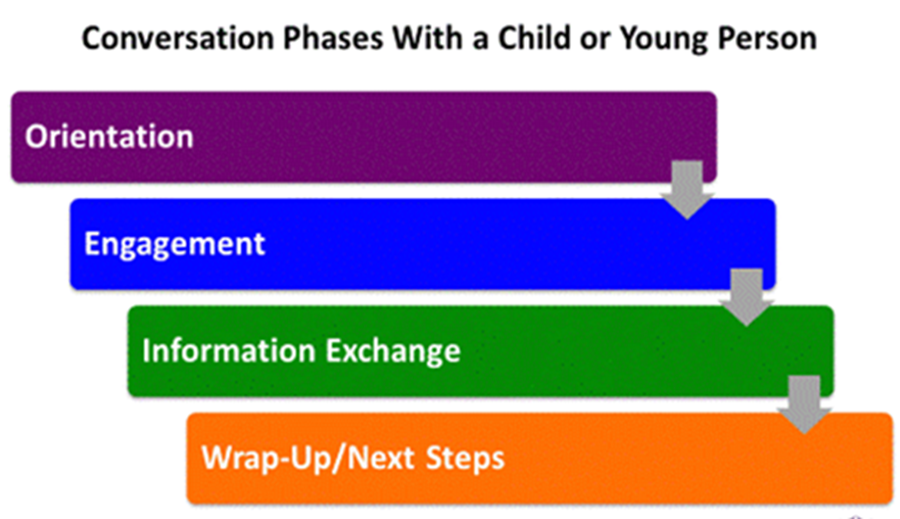Engaging with children to promote their active and genuine participation in decision making is a core component of child protection practice. Participation is an ongoing process through which children and young people:
- are actively listened to
- are supported in expressing their views
- have their views taken into account and recorded
- are involved in decision making processes.
If children have been actively involved in planning and decision making, and feel that their views and opinions have been listened to, plans are more likely to work, including those in relation to a child’s permanence.
The experience of having views and wishes actively sought and listened to can build positive relationships and allow for more positive problem-solving processes.
Seek the views and wishes of children in a developmentally appropriate way by using a range of strategies.
When speaking with children about permanency and other sensitive topics, it is important to create a safe space for the child. Recognise that a child’s readiness to talk may come in their own time or be with someone else.
The following is an outline of conversation phases with a child. This may be particularly helpful to staff who are new to working with children. It can be applied when moving into specific discussions, such as those about permanency.

During the orientation phase, explain to the child who you are and why you are there. Even if you already have a strong relationship with the child, describe (clearly and in an age-appropriate way) the purpose of your visit.
The engagement phase gives the child space to become comfortable with you and the conversation. At this stage, gather information about how the child is feeling on that day so you can tailor your communication. It is good to gain an understanding of the child. They may be anxious and not want to engage for long periods. Ask the child to tell you a story about a holiday or school trip.
Information exchange is about learning what is going well for the child and what worries he/she has. Make sure you are talking about the family.
Wrap-up/Next steps. Always thank the child for speaking with you. Talk about what happens next and if you will visit again.
Published on:
Last reviewed:
-
Date:
Page created
-
Date:
Page created

